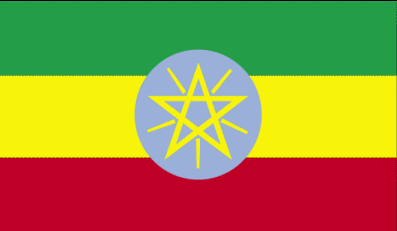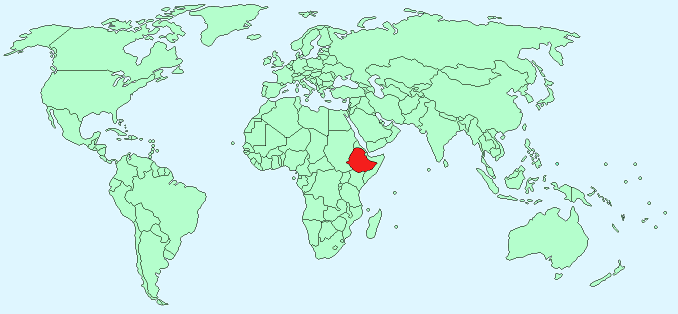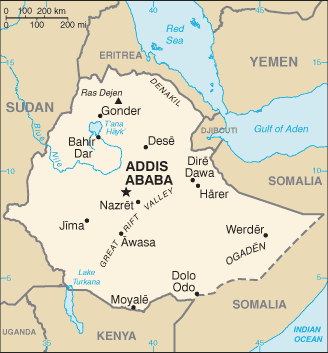Ethiopia


Continent – Africa
Region – Eastern Africa
Size – 1,127,127 km²
Geography – plateau with central mountain range
Language – Amarigna, Oromigna, other African dialects, English
Religion – 60.8% Christian, 32.8% Muslim, 6.4% Other
Monetary Unit – Ethiopian Birr
Natural Resources – small reserves of gold, platinum, copper, potash, natural gas
Agriculture – cereals, pulses, coffee, oilseed, cotton, sugarcane, potatoes, qat, cut flowers; hides, cattle, sheep, goats; fish
Industry – food processing, beverages, textiles, leather, chemicals, metals processing, cement

Neighbouring Countries – Eritrea, Dijibouti, Somalia, Kenya, Sudan
Population – 96,633,458 (2014 estimate)
Population Growth Rate – 3.21%
Average Life Expectancy – 60.75
Capital City – Addis Ababa (3,384,569)
Highest Mountain – Ras Dejen (4,533 m)
Longest River – The Nile 800km in Ethiopia
Climate – tropical, warm, monsoon 10°C to 24°C
Yearly Rainfall – 124 cm (approx) mostly June to September
Plant Life – caraway, carcade, cardamom, chat, coriander, incense, myrrh, red pepper, pyracantha, jasmine, poinsettia and evergreen plants
Animal Life – lion, civet and serval cats, elephant, bush pig, gazelle, antelope, ibex, kudu, dik-dik, oribi, reed buck, wild ass, zebra, hyena, baboon, monkey
Harvard Reference for this page:
Heather Y Wheeler. (2015). Ethiopia. Available: https://www.naturalhistoryonthenet.com/Facts_Figures/Country_Facts/ethiopia.htm. Last accessed Monday, July 18, 2016
Facts and Figures Pages
